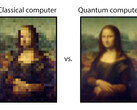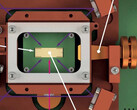Teleportation as a means for near-instantaneous traveling across vast spaces has been on scientists’ minds at least ever since we have seen the first Star Trek depictions in the 1960s. While this technology might still not be accessible for humans or fairly large objects in the foreseeable future, scientists are making important progress in the data transfer and quantum computing realm based on teleportation stemming from the quantum entanglement principle. AMD came up with a patent for a design of a quantum computer based on quantum teleportation back in 2021, but, earlier this year sine European scientists demonstrated a working system, and just recently, Microsoft and Photonic actually put the whole principle in practice.
Microsoft recently collaborated with Photonic in order to build the world’s first “distributed quantum entanglement” system. The experiment made use of silicon quantum dots coupled to a pair of Hydrogen qubits, each in a separate cryostat connected by 40 meters of fiber optics.
The silicon spin qubit units are made of a hydrogen qubit and an electron qubit that work together to produce quantum state information in a controlled knot formation. Scientists also used two lasers to excite each electron qubit, which then simultaneously released photons into a beam splitter with a detector for each of the beams. The electron spin is flipped and the resulting beams are used to entangle the electron qubits in the splitter. Afterwards, each electron qubit is entangled to the paired hydrogen qubit and logic operations can be performed on each qubit unit, teleporting the quantum state information from one pair to another.
Thus, distributed quantum entanglement is achieved, opening up the way to a quantum network that facilitates data transfers, encryptions and, eventually, access to compute power over long distances. Apparently, this will not be a replacement for the classical Internet, but it will act as an additional layer that offers more capabilities.
Source(s)
via Anastasi In Tech






















